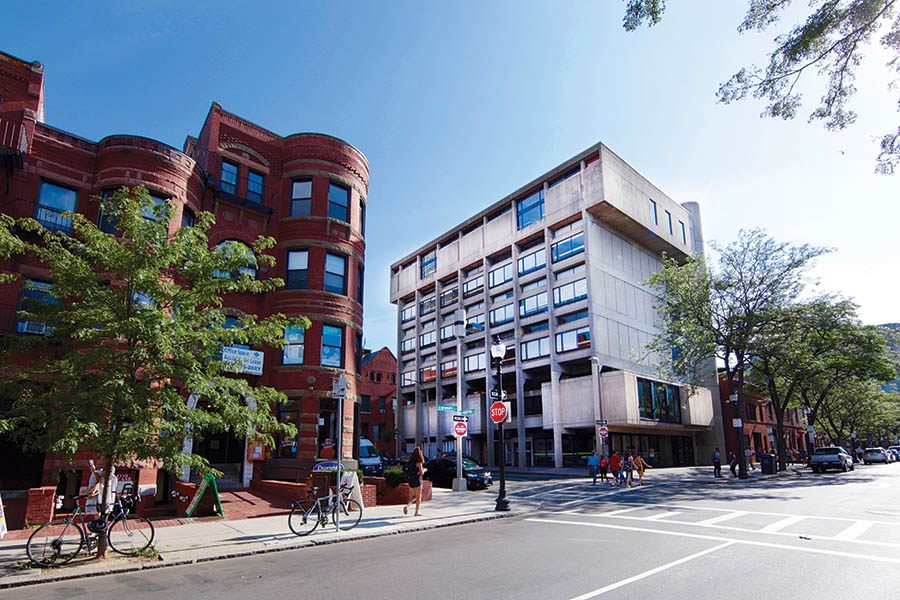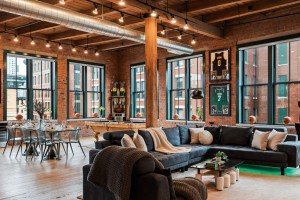Boston Architectural College’s Mahesh Daas Is on a Mission to Reshape Design Education
In his new role as president, Daas seeks to help foster increased empathy, diversity, and creativity.

Prior to assuming his current role, Mahesh Daas served as the dean of the School of Architecture & Design at the University of Kansas, Lawrence. / Portrait by Cody O’Loughlin
In 1990, Mahesh Daas became the first person in his family to get a college degree. Then, the following year, armed with a B.A. in architecture, he left his home country of India to study urban design and realize another family first: moving to the U.S. “Of all places, I landed in the middle of Kansas, which I was familiar with from Superman comics,” Daas jokes. He earned his master’s degree at Kansas State University and, later, went on to work in academia. Last summer, Daas packed his bags for the East Coast to undertake a new role: president of Boston Architectural College. His goal? To help foster increased empathy, diversity, and creativity in local design instruction and, in turn, set an example for innovations in education around the globe. “I thought with a doctorate in higher-education management, and my background in architecture and design, this is where I can make the greatest contribution, by serving not just the college, but also the world at large,” Daas says.
How has being both a first-generation college student and an immigrant shaped the perspective you bring to your current role as the president of BAC?
Being a first-generation anything is an entrepreneurial journey. You’re treading into a world where you know very little and your family knows very little. Life unfolds in extraordinary ways when we are open to new experiences. We have to constantly adapt and be open to rethinking our own decisions, learning a lot, and being very humble. A sense of belonging is also important. The first [thought] I had when I went to university was, I feel so out of place. That is what students and immigrants feel when they enter a new world. So making sure that people feel included at the institution and in the country is very important to me. The first-generation experience shows that nothing is impossible. If we put our minds to it, learning, building partnerships, and having good mentors will help us adapt.

BAC’s main facility, a Brutalist building on Newbury Street, includes an exhibition space, classrooms, studios, and libraries. / Courtesy photo
What sort of educational framework does BAC provide?
Our students are carefully assessed by our faculty as part of a concurrent educational model, where students are simultaneously immersed in practice and academia full time. If you look at the past 15 years, 1,672 firms, industry partners, and nonprofit organizations have employed our students. That is a staggering number, particularly when you [consider] that we are a small, independent, private college. Right now, 81 firms in the Boston region employ our students, who make an average of about $35,000 per year. I believe BAC’s educational innovations are models to be emulated not just in design education, but across the higher-education spectrum.
What do you see as the role of BAC within the city’s larger design community?
During the past six months we have gathered our students, faculty, staff, alumni, and trustees and held a series of facilitated discussions to understand who we are, build teams embodying our values, and shape an inspiring vision for the future of BAC. We envision delivering on our educational mission to diversify the design fields and help our students fully actualize their potential without boundaries. We envision the college as a great banyan tree—a canopy with virtual roots descending down, meeting the disenfranchised, the marginalized, and the unconventional students wherever they live in the world. We envision an articulated network that propels students from K–12 systems, community colleges, and universities around the world into design education. We envision a college that takes up design as a literacy issue in the face of [global problems] that require design-thinking skills. And we envision the institution becoming an epicenter for cutting-edge thought leadership and technological innovation to drive design professions forward.

During his inauguration ceremony, Daas spoke about the college’s future and his quest to diversify design professions. / Courtesy photo
You mentioned design literacy. Can you tell us what that means to you?
Design really ought to become a basic skill like communication or critical thinking. While not every individual can or will become a professional designer, every individual can think like a designer and approach complex problems with a design-thinking skill set. Designers strive to understand and meet human needs by producing working solutions that organize materials, movement systems, institutions, and space in harmony with larger systems such as ecology, economics, or political systems. While tons of books have been written about design thinking and design skills, they all boil down to critical and spatial thinking, sketching and model making, prototyping, analysis and synthesis, creativity, visual and verbal presentation, project management, and collaboration. We have been joining hands with local K–12 and higher-education systems to equip every individual with these skills. Design curriculums ought to be integrated into all education levels, and design-project-based learning could be embraced as a pedagogical approach, turning STEM disciplines into STEAM disciplines, where the “A” stands for the arts and design fields.
What excites you most about educating the next generation of design talent in Boston?
This generation and the subsequent generations are who we should really be paying attention to. These are the generations that really care about the world. So educating them to be inclusive, collaborative, compassionate, engaging, energizing, and empowering is very important. And that is what I’m most excited about: to open the world up, to listen to [students], to work with them, to care about them. It is not about how the past generations know everything that is to be known and they just pass it down. Rather, it’s about being open to creative possibilities and empowering these generations through design thinking and creative thinking, challenging assumptions, and challenging conventions. That is how we will find the solutions to the big problems of the world today.

Daas was inaugurated as president of Boston Architectural College in a December 2019 ceremony at Faneuil Hall. / Courtesy photo


